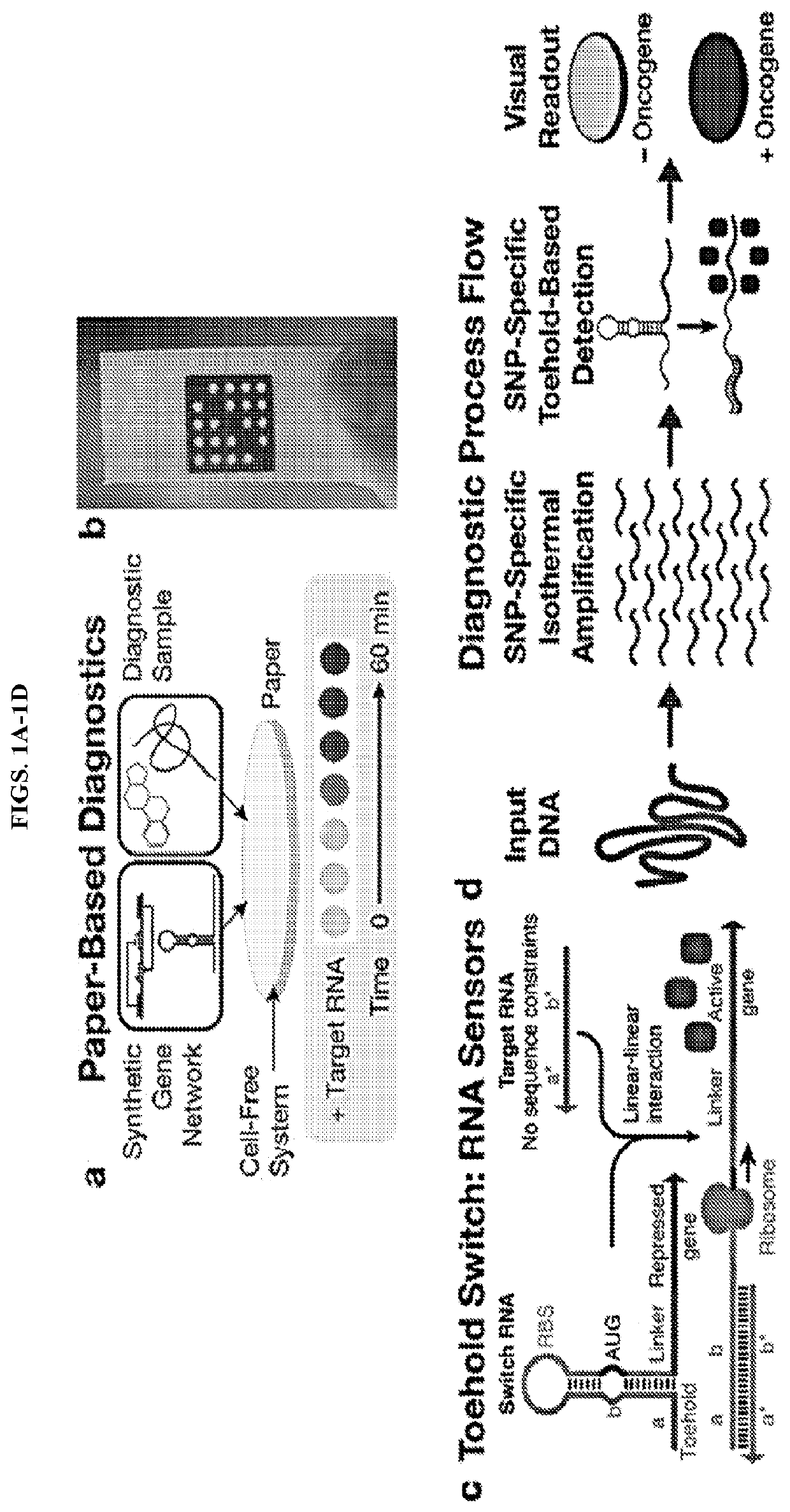Ultraspecific nucleic acid sensors for low-cost liquid biopsies
- Summary
- Abstract
- Description
- Claims
- Application Information
AI Technical Summary
Benefits of technology
Problems solved by technology
Method used
Image
Examples
examples
[0079]SNP-Specific Remote Toehold Primers
[0080]Remote toehold primers provide enhanced sequence specificity by coupling an extended docking site with a short remote toehold domain whose binding is sensitive to single-nucleotide changes in the template as illustrated in FIG. 5. In these primers, the 5′ docking site binds to both the mutated and wild-type targets and the remote toehold domain is separated from the docking site by a spacer of 5 to 15 nts or more. The remote toehold on the 3′ end of the primer is designed to be complementary to the SNP-containing region of the template and will thus bind to the on-target mutated template to enable extension by the DNA polymerase. With the off-target wild-type template, a single mismatch in hybridization with the remote toehold prevents the 3′ end of the primer from binding and disrupts primer extension by the DNA polymerase.
[0081]FIG. 6 shows agarose gels from experiments using remote toehold primers to amplify four sets of template seq...
PUM
| Property | Measurement | Unit |
|---|---|---|
| Length | aaaaa | aaaaa |
Abstract
Description
Claims
Application Information
 Login to View More
Login to View More - R&D
- Intellectual Property
- Life Sciences
- Materials
- Tech Scout
- Unparalleled Data Quality
- Higher Quality Content
- 60% Fewer Hallucinations
Browse by: Latest US Patents, China's latest patents, Technical Efficacy Thesaurus, Application Domain, Technology Topic, Popular Technical Reports.
© 2025 PatSnap. All rights reserved.Legal|Privacy policy|Modern Slavery Act Transparency Statement|Sitemap|About US| Contact US: help@patsnap.com



